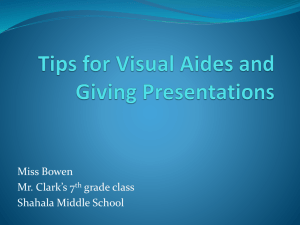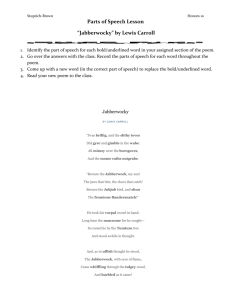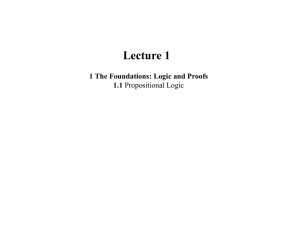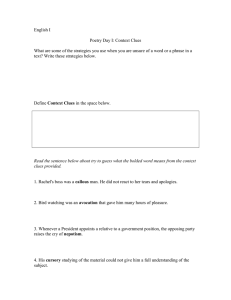English 203 – Critical Approaches to Reading Literature
advertisement
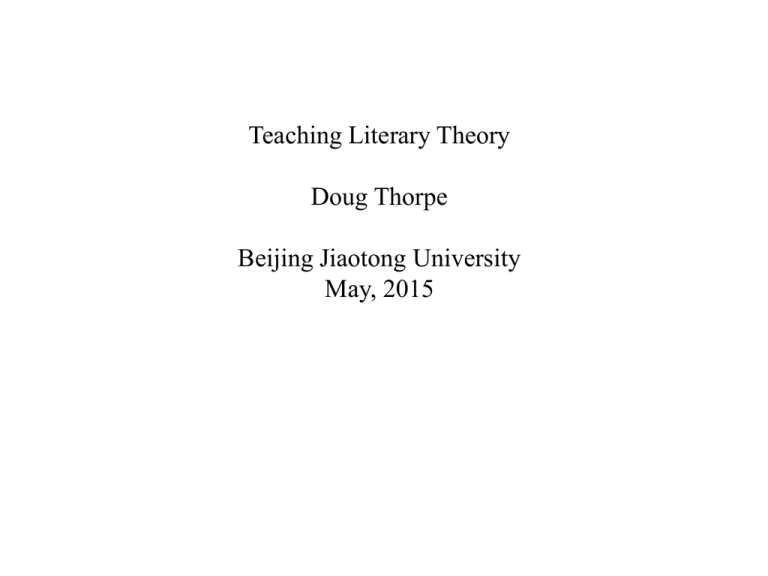
Teaching Literary Theory Doug Thorpe Beijing Jiaotong University May, 2015 The Problem: -- students find theory difficult and abstract -- they put off taking theory until their senior year -- they prefer to just read and interpret poems, stories, and novels The Solution: -- emphasize applied theory; ideas useful if they help you read and interpret -- course combines theoretical texts with literary texts -- encourage experiments with critical approaches English 203 – Critical Approaches to Reading Literature [Note: the 200-level number means that students may take The course in the second undergraduate year, though in practice the course fills with 2nd, 3rd, and 4th-year undergraduates.] Learning Objectives for the Course: -- Students will study a representative selection of recent critical approaches to the reading of literary texts. They will acquire an advanced critical vocabulary for the study of literature. In sampling and practising various critical approaches they will become more aware of their own reading habits, key differences between their reading and the reading of others, and the dynamics of different readings communities. They will practise interpreting literary texts, both by articulating those interpretations in class and by writing critical essays. They will acquire professional skills related to the responsible use of sources and proper documentation of written work. Warm-up with a Sample Text The Tiger Once a tiger was brought to the celebrated animal tamer Burson, for him to give his opinion as to the possibility of taming the animal. The small cage with the tiger in it was pushed into the training cage, which had the dimensions of a public hall; it was in a large hut-camp a long way outside the town. The attendants withdrew: Burson always wanted to be completely alone with an animal at his first encounter with it. The tiger lay quiet, having just been plentifully fed. It yawned a little, gazed wearily at its new surroundings, and immediately fell asleep. The Critical Compass LANGUAGE AUTHOR TEXT WORLD AUDIENCE One example of a Language-based Approach Language as System of Differences Everything that has been said up to this point boils down to this: in language there are only differences. Even more important: a difference generally implies positive terms between which the difference is set up; but in language there are only differences without positive terms. Whether we take the signified or the signifier, language has neither ideas nor sounds that existed before the linguistic system, but only conceptual and phonic differences that have issued from the system. The idea or phonic substance that a sign contains is of less importance than the other signs that surround it. Proof of this is that the value of a term may be modified without either its meaning or its sound being affected, solely because a neighbouring term has been modified. -- Ferdinand de Saussure, Course in General Linguistics (1913) Nonsense Poetry as a text-case for Saussure’s Theory The case of “Jabberwocky”, from Lewis Carroll’s Through the Looking Glass (1871) ‘Twas brillig, and the slithy toves Did gyre and gimble in the wabe; All mimsy were the borogoves, And the mome raths outgrabe. "Beware the Jabberwock, my son! The jaws that bite, the claws that catch! Beware the Jubjub bird, and shun The frumious Bandersnatch!" He took his vorpal sword in hand: Long time the manxome foe he sought -So rested he by the Tumtum tree. And stood awhile in thought. And as in uffish thought he stood, The Jabberwock, with eyes of flame, Came wiffling through the tulgey wood, And burbled as it came! One, two! One, two! And through and through The vorpal blade went snicker-snack! He left it dead, and with its head He went galumphing back. "And hast thou slain the Jabberwock? Come to my arms, my beamish boy! O frabjous day! Callooh! Callay!" He chortled in his joy. ‘Twas brillig, and the slithy toves Did gyre and gimble in the wabe; All mimsy were the borogoves, And the mome raths outgrabe. World-based approaches: the problem of Representation In An Artist’s Studio One face looks out from all his canvases. One selfsame figure sits or walks or leans: We found her hidden just behind those screens, That mirror gave back all her loveliness. A queen in opal or in ruby dress, A nameless girl in freshest summer-greens, A saint, an angel – every canvas means The same one meaning, neither more nor less. He feeds upon her face by day and night, And she with true kind eyes looks back on him, Fair as the moon and joyful as the light: Not wan with waiting, not with sorrow dim; Not as she is, but was when hope shone bright; Not as she is, but as she fills his dream. -- Christina Rossetti, (1862) MALE ARTIST FEMALE represents (MODEL) as a historical character POET represents model as woman represents artist as man Note the paradox: the POET is herself an artist, representing both the Artist and his model as character types. Note that the model remains nameless, despite the poet’s sympathy for her. Reader-based approaches: the problem of the authority of personal experience A debate between Diana Fuss and bell hooks “The politics of experience sometimes takes the form of a tendency amongst individuals and groups to “one down” each other on the oppression scale. Identities are itemized, appreciated, and ranked on the basis of which identity holds the greatest currency at a particular historical moment and in a particular institutional setting. . . the tendency to see only one part of a subject’s identity (usually the most visible part) and to make that part stand for the whole. A male professor, for example, is typically reduced to his “maleness,” an Asian professor to his or her “Asianness,” and so on. A hierarchy of identities is set up within each speaking subject (not just between subjects), and it is this ranking of identities which is often used either to authorize an individual to speak on the basis of the truth of her lived experience or to de-authorize an individual from speaking on the basis of his lack of experience. While truth clearly does not equate with experience, it cannot be denied that it is precisely the fiction that they are the same which prompts many students, who would not perhaps speak otherwise, to enter energetically into those debates they perceive as pertaining directly to them. The authority of experience, in other words, not only works to silence students, it also works to empower them. How are we to negotiate the gap between the conservative fiction of experience as the ground of all truth-knowledge and the immense power of this fiction to enable and encourage student participation?” -- Diana Fuss, “Essentialism in the Classroom” As a teacher, I recognize that students from marginalized groups enter classrooms within institutions where their voices have been neither heard nor welcomed, whether these students discuss facts—those which any of us might know—or personal experience. My pedagogy has been shaped to respond to this reality. If I do not wish to see these students use the “authority of experience” as a means of asserting voice, I can circumvent this possible misuse of power by bringing to the classroom pedagogical strategies that affirm their presence, their right to speak, in multiple ways on diverse topics. -- bell hooks, “Essentialism and Experience” Two key ideas from hooks: -- “the oppositional gaze”, i.e. how black spectators would learn how to resist the degrading representations of black people in white-dominated television and film; -- “conflicted spectatorship”, i.e. the experience of being both attracted to a representation, even while one knows it is false. An essay topic I gave my students: bell hooks documents the dilemma of spectators whose desire for entertainment conflicts with their critical thinking. They feel drawn to representations that degrade them. With that account in mind, describe and analyse one of your own experiences of conflicted spectatorship. Author-based approaches Key issues: -- do we need to know details of the author’s life and thinking in order to read the author’s text? -- note that we can read anonymous texts and interpret them, though people still speculate about what the author was thinking when the text was written. -- is there such a thing as true originality, or do all texts come from the language and from tradition? “A text is a tissue of quotations, drawn from innumerable centres of culture.” -- Roland Barthes, “The Death of the Author” (1968) Conclusion: By the end of English 203, if the Learning Objectives have been achieved, students will have gained a vocabulary for describing how and why they read and interpret the way they do. They will also be more aware of reading strategies that they have not yet attempted, but could. By Graduate School, we expect graduate students to be able to use a variety of critical approaches, to recognize their advantages and disadvantages, and to choose their own critical approach for their thesis. April 7, 2015, at the last day of my graduate seminar on literature of the 1890’s. Top row, left to right: Sheihiyar Sheikh, Colin Gibbings, Federica Giannelli, Brendan Swalm, Stephen Hardy, Cory Baumgartner, Rodrigo Yanez; Bottom row: Aaron Thacker, Kyle Dase, Danielle Grant, Carina Puls
